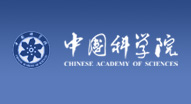报告题目:低成本和安全的大规模储能:镁离子电池和聚合物电池
报 告 人: 姚彥 教授, 美国休斯顿大学
报告时间: 7月14日上午10:30 点
报告地点: 理化楼三楼会议室
报告人简介:姚彦,美国休斯顿大学电气和计算机工程系助理教授。曾获得美国海军研究院青年科学奖(2013)以及ARPA-E资助。研究主要集中在材料和器件的能量存储和转换:先进锂离子电池材料的设计,太阳能电池,催化剂和纳米结构材料。姚博士已发表论文35篇,被同行引用次数超过7000次。
报告摘要:
To meet surging demands for sustainable energy and clean environment, one critical requirement is to develop high-energy, safe and low-cost rechargeable batteries for electric transportation and grid energy storage. Mg rechargeable batteries (MgRBs) stand out as a promising candidate beyond lithium ion battery technologies due to high volumetric energy density, resource abundance, and the dendrite-free deposition behavior of Mg, which ensures safe operation[1]. Many of the advantages of MgRBs originate from the divalent nature and small ionic size of Mg ions; however, these properties also render the cation too polarizing to diffuse easily in most ion-intercalation materials. We recently investigated interlayer expansion as a general and effective atomic-level lattice engineering approach to transform inactive layered intercalation hosts into efficient Mg storage materials without adverse side effects[2]. We have combined theory, synthesis, electrochemical measurements, and kinetic analysis to improve Mg diffusion behavior in MoS2, which is a poor Mg transporting material in its pristine form. The expansion boosts Mg conductivity by two orders of magnitude, effectively enabling the otherwise barely active MoS2 to approach its theoretical storage capacity as well as to achieve one of the highest rate capabilities among Mg-intercalation materials. The interlayer expansion approach can be leveraged to a wide range of host materials for the storage of various ions, leading to novel intercalation chemistry and opening up new opportunities for the development of advanced materials for next-generation energy storage.
In addition, we also demonstrated the excellent stability of a high areal capacity hybrid magnesium-lithium-ion batteries (MLIBs) cell and dendrite-free deposition behavior of Mg under high current density[3]. The hybrid cell showed no capacity loss for 100 cycles with Coulombic efficiency as high as 99.9%, whereas the control cell with a Li-metal anode only retained 30% of its original capacity with Coulombic efficiency well below 90%. The use of TiS2 as a cathode enabled the highest specific capacity and one of the best rate performances among reported MLIBs. Postmortem analysis of the cycled cells revealed dendrite-free Mg deposition on a Mg anode surface, while mossy Li dendrites were observed covering the Li surface and penetrated into separators in the Li cell. The energy density of a MLIB could be further improved by developing electrolytes with higher salt concentration and wider electrochemical window, leading to new opportunities for its application in large-scale energy storage.




